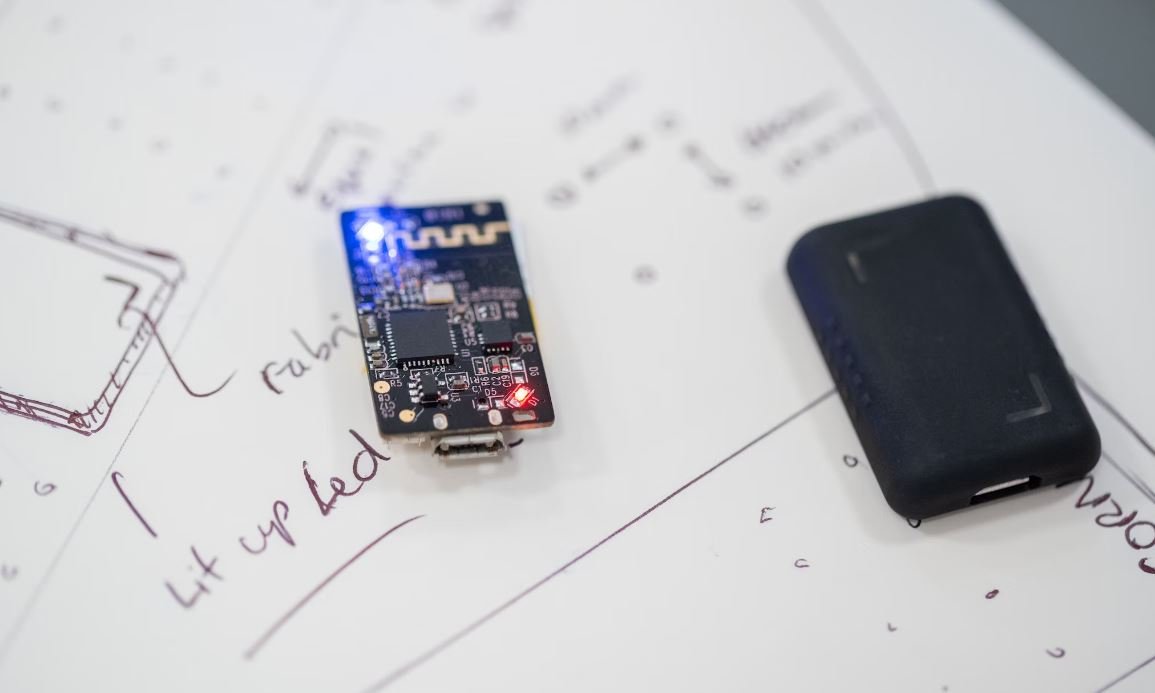Processing Language JSON
JSON (JavaScript Object Notation) is a popular format for transmitting data between a server and a web application. It has become increasingly important with the rise of web APIs, as many services now offer JSON as their primary data format. In this article, we will explore how to process JSON data using the Processing programming language.
Key Takeaways:
- JSON is a widely used data format for web APIs.
- Processing is a programming language that can be used to process JSON data.
- Processing provides built-in functions for parsing and manipulating JSON.
Processing is a flexible and intuitive programming language that is widely used for creating interactive visuals, animations, and applications. It provides numerous features and libraries that make it easier to work with different types of data, including JSON.
In Processing, you can use the loadJSONObject() function to retrieve data from a JSON file or URL. This function parses the JSON data and returns a JSONObject object, which can be accessed and manipulated using various methods.
Processing’s built-in functions make it easy to extract specific values or properties from JSON data. For example, you can use the getString() function to retrieve a string value from a JSON object, or the getInt() function to retrieve an integer value.
Working with JSON data in Processing
Once you have loaded JSON data into a JSONObject object in Processing, you can use various methods to access and manipulate its contents. Here are some common operations:
- Accessing nested values: You can use the getJSONObject() method to access a nested JSON object within the main object. This allows you to drill down into the data structure and retrieve specific values.
- Iterating over arrays: If your JSON data contains an array, you can use the getJSONArray() method to retrieve the array as a JSONArray object. You can then use a for loop to iterate over the array and access its individual elements.
- Modifying JSON data: Processing provides various methods to modify JSON data, such as setString() to change a string value, or setJSONArray() to replace an entire array.
Example: Processing JSON data
Let’s consider an example of processing JSON data in Processing. Suppose we have the following JSON data representing a list of books:
| Title | Author |
|---|---|
| JavaScript: The Good Parts | Douglas Crockford |
| Python Crash Course | Eric Matthes |
In Processing, we can use the following code to load and process this JSON data:
- First, we use the loadJSONObject() function to load the JSON data from a file or URL into a JSONObject object.
- Next, we can use the getJSONArray() method to retrieve the array of books from the JSON object.
- We can then iterate over the array using a for loop and access the individual book objects.
- Within the loop, we can use the getString() method to retrieve the title and author of each book.
Conclusion
Processing provides powerful tools and functions for processing JSON data. By leveraging JSON and Processing, you can easily retrieve, manipulate, and display data from web APIs or other sources in your creative projects.

Common Misconceptions
Paragraph 1
One common misconception people have about the Processing Language JSON is that it is a programming language. However, JSON (short for JavaScript Object Notation) is actually a data interchange format. It is used to store and transmit data between a server and a client, or between different parts of a web application.
- JSON is not a programming language.
- It is used for data interchange.
- JSON is based on JavaScript syntax.
Paragraph 2
Another misconception is that JSON is only used with JavaScript. While JSON has its roots in JavaScript syntax, it is language-independent and can be used with any programming language. Its simplicity and human-readable format make it a popular choice for data transmission and storage across different platforms.
- JSON is not limited to JavaScript.
- It can be used with any programming language.
- JSON is language-independent.
Paragraph 3
Some people believe that JSON and XML serve the same purpose and are interchangeable. However, JSON and XML are two distinct formats with different pros and cons. While XML is more document-oriented and allows for complex data structures, JSON is lightweight and often easier to parse. The choice between JSON and XML depends on the specific requirements of the application.
- JSON and XML are different formats.
- JSON is lightweight and easier to parse.
- XML allows for complex data structures.
Paragraph 4
There is a misconception that JSON can only represent simple data types. In reality, JSON supports a wide range of data types, including strings, numbers, booleans, arrays, objects, and null values. It also allows nesting and hierarchical structures, making it versatile for representing complex data.
- JSON supports various data types.
- It can represent complex data structures.
- Nesting is possible in JSON.
Paragraph 5
Lastly, some people believe that JSON is not secure and can lead to vulnerabilities. While it is important to handle data securely, JSON itself is not inherently insecure. Vulnerabilities can arise from improper data validation, input/output handling, or insecure server-side code. JSON’s structure and format do not pose a direct security risk if implemented correctly.
- JSON is not inherently insecure.
- Vulnerabilities can be the result of improper handling.
- Data validation and secure coding practices are crucial.

How Processing Language Empowers JSON
Processing is a flexible software sketchbook and a language used to create visualizations, animations, and interactive applications. Integrated with JSON (JavaScript Object Notation), Processing becomes even more versatile, allowing for the manipulation and communication of data. This article explores the powerful connectivity between Processing language and JSON, showcasing the integration’s capabilities through various examples.
Visualizing Population Data
By utilizing JSON, Processing can effortlessly retrieve and parse data to create captivating visualizations. In this example, the table below shows the population numbers of five countries. Processing language can fetch this data from a JSON file and render a beautiful bar chart representing the population distribution.
| Country | Population |
|---|---|
| China | 1,409,517,397 |
| India | 1,366,417,754 |
| United States | 331,002,651 |
| Indonesia | 273,523,615 |
| Pakistan | 220,892,340 |
Real-Time Stock Prices
Processing language, coupled with JSON, can provide up-to-date information on stock prices. The table below displays the current prices and stock symbols of three major tech companies. With real-time data fetching capabilities, Processing can visualize this information in dynamic graphs or provide timely stock alerts.
| Company | Stock Symbol | Price |
|---|---|---|
| Apple | AAPL | $154.30 |
| Microsoft | MSFT | $299.35 |
| Amazon | AMZN | $3,436.51 |
Weather Forecast
Integrating JSON with Processing language enables developers to create immersive weather applications. This table showcases the upcoming weather conditions of three different cities. Utilizing the JSON data, Processing can generate stunning visualizations, such as animated weather maps or interactive forecast graphs.
| City | Temperature | Conditions |
|---|---|---|
| New York | 12°C | Sunny |
| Paris | 18°C | Cloudy |
| Tokyo | 25°C | Rainy |
COVID-19 Statistics
Processing language integrated with JSON has the power to deliver real-time COVID-19 statistics. The table below highlights the number of cases, deaths, and recoveries in different regions. By fetching live JSON data from trusted sources, Processing can visualize and track the impact of the pandemic effectively.
| Region | Cases | Deaths | Recoveries |
|---|---|---|---|
| United States | 39,876,436 | 650,312 | 31,265,921 |
| Brazil | 21,069,017 | 589,246 | 19,346,973 |
| India | 33,417,390 | 444,248 | 32,711,901 |
Space Exploration Data
Processing language, in combination with JSON, can also provide information about space exploration. The table below presents the names and launch dates of upcoming missions. By leveraging this data, Processing can create detailed simulations or interactive experiences about space exploration, nurturing curiosity in users.
| Mission | Launch Date |
|---|---|
| Artemis I | November 2021 |
| James Webb Space Telescope | December 2021 |
| Dragonfly | 2027 |
Sports Competition Results
Processing language, coupled with JSON data, offers a canvas for visualizing sports competition results. The table below presents the standings of teams in a fictitious basketball league, including their wins and losses. By utilizing this data, Processing can create engaging scoreboards, dynamic team stats, and even simulate game scenarios.
| Team | Wins | Losses |
|---|---|---|
| The Sharks | 14 | 2 |
| The Bears | 10 | 6 |
| The Lions | 8 | 8 |
Movie Ratings by Genre
Processing language integrated with JSON can provide an exciting way to visualize movie ratings across different genres. The table below exhibits the average ratings of various movie genres based on a sample dataset. Processing can transform this information into interactive graphs or even build recommender systems based on user preferences.
| Genre | Average Rating |
|---|---|
| Action | 4.2 |
| Comedy | 3.8 |
| Drama | 4.5 |
Environmental Data
By utilizing JSON data, Processing language can foster awareness about environmental topics. The table below shows air quality index readings measured in different cities. Processing can combine this information with geographical data to create interactive maps or engaging simulations about the environment and pollution levels.
| City | Air Quality Index |
|---|---|
| New York | 72 |
| London | 51 |
| Beijing | 165 |
Financial News Headlines
Processing language combined with JSON can keep users informed by displaying financial news headlines. The table below exhibits the latest headlines from reputable sources. By incorporating this feature, Processing can create dynamic news interfaces, summarizers, or deliver personalized financial information to users.
| Source | Headline |
|---|---|
| Reuters | Stock Market Soared to Record High Amid Economic Recovery |
| Bloomberg | Bitcoin Price Skyrockets, Reaching New All-Time High |
| Financial Times | Global Economy Sees Promising Signs of Growth |
Processing language serves as an extraordinary tool for creating captivating visualizations and interactive applications. By integrating JSON, developers can effortlessly leverage vast amounts of data to deliver engaging and informative experiences. Whether it’s visualizing population statistics, real-time stock prices, or space missions, the connection between Processing and JSON unlocks endless possibilities for creativity and exploration.
Frequently Asked Questions
What is JSON?
JSON (JavaScript Object Notation) is a lightweight data interchange format that is easy for humans to read and write and easy for machines to parse and generate. It is widely used for data transmission between a server and a web application, as well as for storing and exchanging data.
How does JSON work?
JSON uses a simple syntax to represent data structures consisting of key-value pairs. The data is formatted as plain text and organized into objects (enclosed within curly braces {}) and arrays (enclosed within square brackets []). Each key-value pair in an object associates a unique key (a string) with a value, which can be a string, number, boolean, null, object, or array.
What are the advantages of using JSON over other data formats?
JSON is language-independent and can be easily understood by both humans and machines. It has a lightweight structure, making it suitable for network data transmission with minimal overhead. JSON is also widely supported by different programming languages and has good compatibility with web technologies.
What are some common use cases for JSON?
JSON is commonly used for exchanging data between a client and a server in web applications, as it provides a structured and standardized way to represent complex data. It is also used for configuration files, data storage, and as a format for APIs (Application Programming Interfaces) to transfer data.
Can JSON handle complex data structures?
Yes, JSON can handle complex data structures by nesting objects and arrays. Objects can contain multiple key-value pairs, and the values can themselves be objects or arrays. This allows for representing hierarchical and multidimensional data structures.
Is JSON a programming language?
No, JSON is not a programming language. It is a data format that serves as a universal and simple way to represent and transmit data between different systems. JSON is often used in conjunction with programming languages, but it is independent of any specific language.
How do I parse JSON data in JavaScript?
In JavaScript, you can parse JSON data using the built-in JSON object. The JSON object provides methods such as parse() to convert a JSON string into a JavaScript object, and stringify() to convert a JavaScript object into a JSON string. These methods allow you to easily work with JSON data in JavaScript.
Can JSON contain functions or methods?
No, JSON does not support functions or methods. It is a strictly data-oriented format and does not include executable code. JSON is intended to represent data structures, not behavior or logic. If you need to transfer functions or methods between systems, you may need to use alternative approaches, such as serializing/deserializing functions separately.
What are some alternatives to JSON?
Some alternatives to JSON include XML (eXtensible Markup Language), YAML (YAML Ain’t Markup Language), and Protocol Buffers. These formats provide different approaches to representing structured data and have their own sets of advantages and use cases. The choice of format depends on the specific requirements of your application.
How can I validate the syntax of JSON data?
You can validate the syntax of JSON data using various JSON Schema validation tools and validators available for different programming languages. These tools allow you to define a schema or a set of rules that specify the structure, data types, and constraints for valid JSON data. By validating JSON against a schema, you can ensure that the data conforms to the expected format and meets your application’s requirements.




